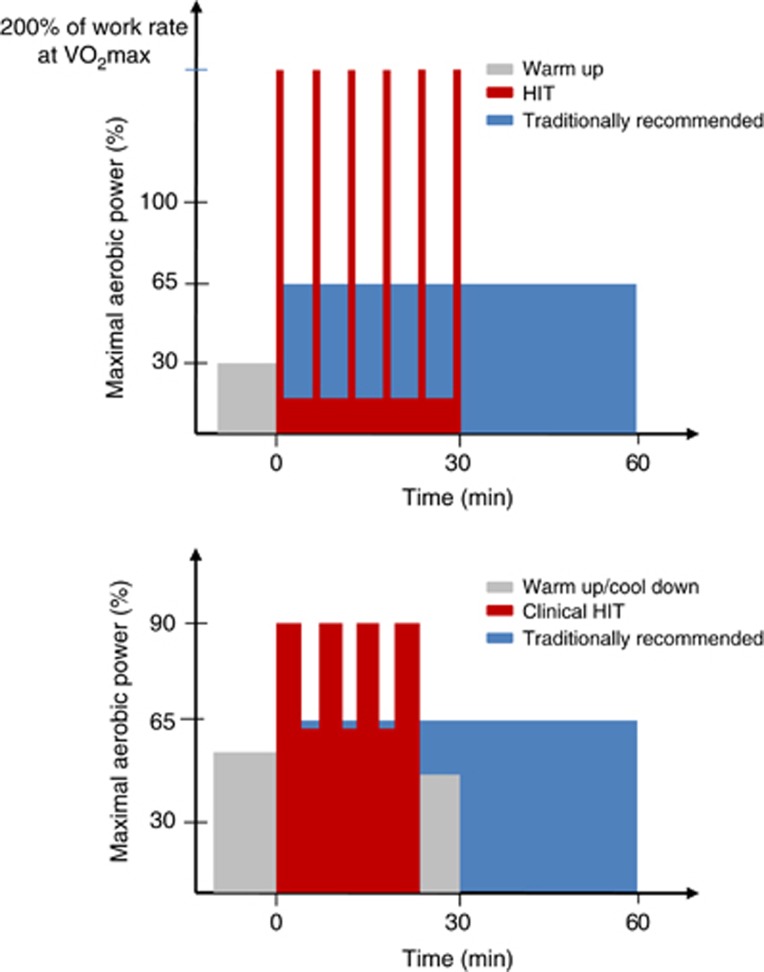Figure 2.
Top panel: Schematic comparing high-intensity interval exercise training (HIT) against traditional exercise guidelines recommended by leading health agencies (e.g., World Health Organization8 and American College of Sports Medicine9). The HIT protocol illustrated here consists of 6 × 30-second all-out cycling efforts separated by 4.5 minutes of active recovery at very low intensity (e.g., 30 W). This HIT protocol is typically performed three times per week, while exercise training under the traditional model consists of continuous moderate intensity cycling at 65% of maximal aerobic power (V̇O2max) for 60 minutes, five times per week. Weekly training volume is ~90% lower and time commitment ~one-third for HIT versus that of traditional aerobic exercise training.69 Bottom panel: Schematic comparing a ‘clinical HIT' protocol against traditional exercise guidelines. This HIT protocol consists of 4-minute intervals of exercise at 85% to 95% of heart rate maximum, separated by 3-minute low-intensity active recovery. A recent meta-analysis of studies utilizing this clinical model of HIT in patients with lifestyle-induced chronic cardiometabolic disease revealed that HIT induced greater reductions in blood pressure, improved blood glucose control, and increased aerobic capacity to a greater extent than did exercise conducted according to traditional guidelines; furthermore, no increase in adverse events was reported with HIT.77

